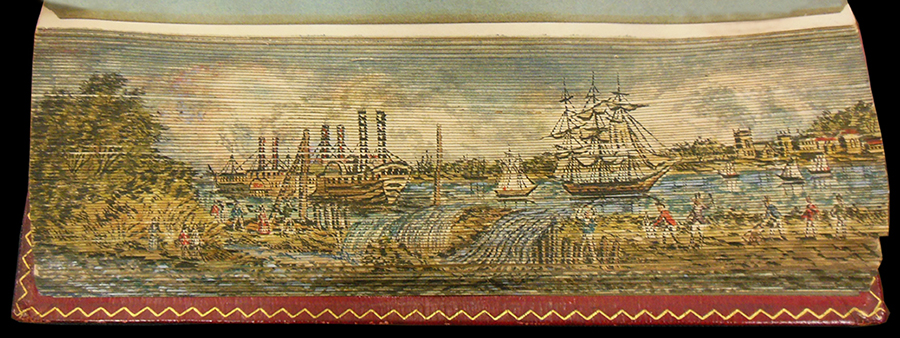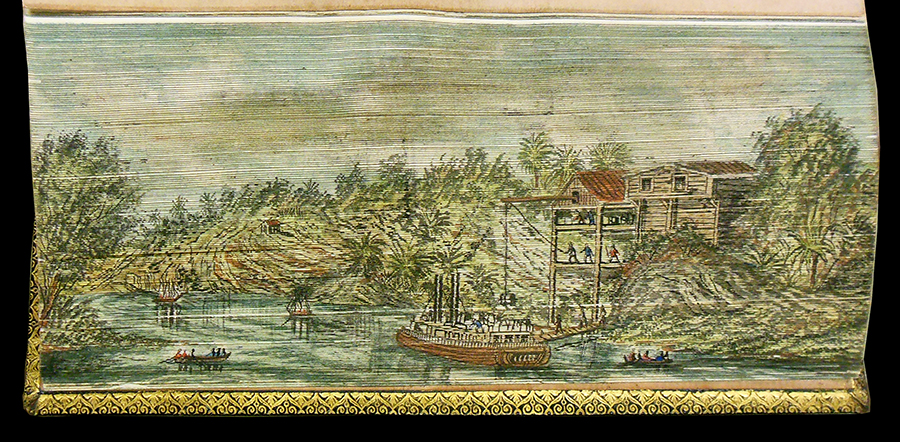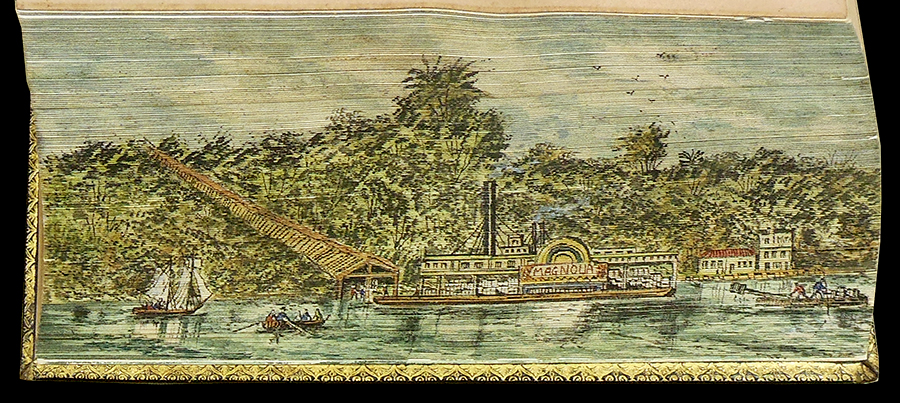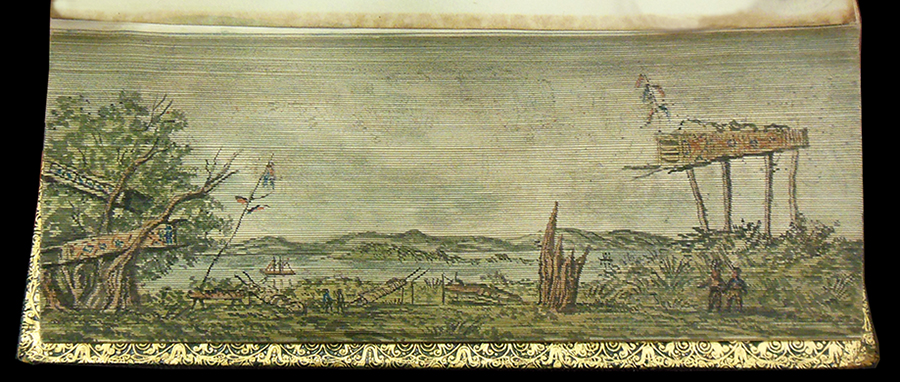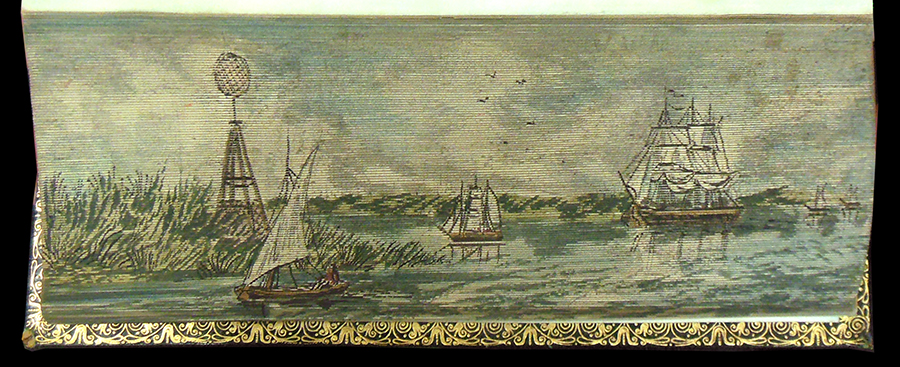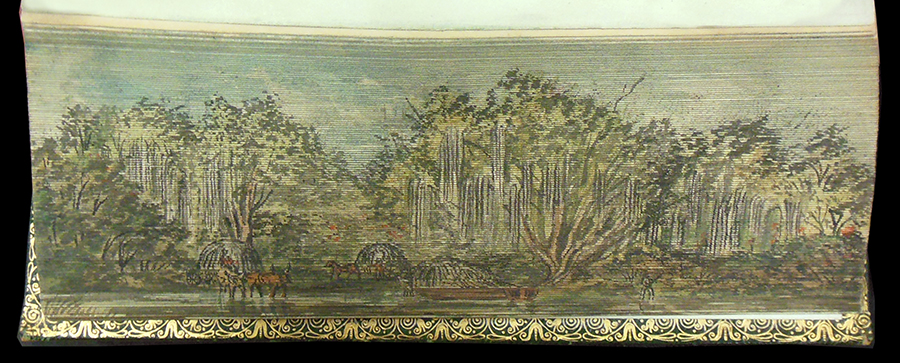Vanishing Louisiana like you've never seen it
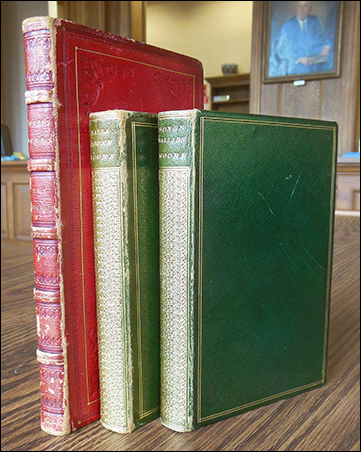 We hear a lot about "vanishing" Louisiana these days. Our coast, towns, and wildlife are at risk from hurricanes, oil spills, rising sea levels, and changes in land management, and elements of our state's distinctive culture and history are gradually disappearing. Four books in the LSU Libraries' Special Collections reveal a little of what has been lost... but in a way that will surprise you!
We hear a lot about "vanishing" Louisiana these days. Our coast, towns, and wildlife are at risk from hurricanes, oil spills, rising sea levels, and changes in land management, and elements of our state's distinctive culture and history are gradually disappearing. Four books in the LSU Libraries' Special Collections reveal a little of what has been lost... but in a way that will surprise you!
At first glance, the volumes appear no different from many other old books. They have attractive leather covers. The edges are covered with gold leaf. Inside, we find neatly printed nineteenth-century poetry. But just beneath the surface, the books have an amazing secret in store: when the covers are opened and the pages fanned out, colorful images magically begin to appear from the edges of the books.
These are what are called fore-edge paintings (sometimes also referred to as "disappearing" or "vanishing" paintings). Although impressive, the concept is actually very simple. To make one, all you have to do is fan out the pages of a book with gilded edges, clamp them in a vice, and then paint an image using watercolors. A tiny sliver of the painting will end up on the extreme margins of each page. When you close the book, the gilded edges will hide the watercolor. Fan out the pages again and each segment will come back together, recreating your painting.
The four books shown here are extra special because they are double fore-edge paintings. This means that after viewing one painting, you can turn the book over and see another. (Each side of each page contains one painting.)
Although these books were printed in 1811, 1854, and 1855, the fore-edge paintings were put on much later. They are thought to have been done in the 1940s by an unknown English artist whom Jeff Weber, author of Annotated Dictionary of Fore-Edge Painting Artists & Binders (2010), refers to as the "American City View Painter."
Sir Walter Scott's The Vision of Don Roderick (1811) contains fore-edge paintings showing New Orleans in the mid nineteenth century and a crevasse in a levee along the Misssissippi River. In Thomas Moore's Lallah Rookh (1818), we find views of a cotton shute and a cotton steamer being loaded. Another edition of Lallah Rookh (1854) shows an Indian burial ground and a market garden on the Mississippi. Finally, the library's copy of Thomas Moore's Songs, Ballads, and Sacred Songs (1855) depicts the southwest pass of the Mississippi River delta and moss gatherers in a Louisiana swamp.
Artists and bookbinders have been decorating the edges of books since medieval times. The first vanishing fore-edge paintings were made in England in the late eighteenth century, and the art is still alive and well today. It is known to have been practiced in Louisiana by James Rolando (1909-1984), an Italian-born Salesian brother who came to New Orleans in 1933 and taught art and bookbinding at the Hope Haven orphanage and Archbishop Shaw High School. Special Collections owns a copy of one of his bindings (A Doctor at Calvary, Cohn Collection), but we have not yet been able to determine the whereabouts of any of his fore-edge paintings. If you know where to find one, please contact us at special@lsu.edu.

